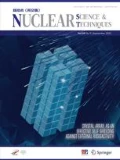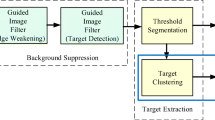Abstract
Real-time track reconstruction in high-energy physics experiments at colliders running at high luminosity is very challenging for trigger systems. To perform pattern recognition and track fitting, artificial retina or Hough transformation algorithms have been introduced to the field typically implemented on state-of-the-art field programmable gate array (FPGA) devices. In this paper, we report on two FPGA implementations of the retina algorithm: one using a mixed Floating-Point core and the other using Fixed-Point and Look-Up Table, and detailed measurements of the retina performance are investigated and compared. So far, the retina has mainly been used in a detector configuration comprising parallel planes, and the goal of our work is to study the hardware implementation of the retina algorithm and estimate the possibility of using such a method in a real experiment.








Similar content being viewed by others
References
F. Palla, M. Pesaresi, A. Ryd, Track finding in CMS for the level-1 trigger at the HL-LHC. J. Instrum. 11, C03011 (2016). https://doi.org/10.1088/1748-0221/11/03/c03011
W. Ashmanskas, A. Bardi, M. Bari et al., Silicon vertex tracker: a fast precise tracking trigger for CDF. Nucl. Instrum. Methods A 447, 218 (2000). https://doi.org/10.1016/s0168-9002(00)00190-x
J. Anderson, A. Andreani, A. Andreazza et al., FTK: a fast track trigger for ATLAS. J. Instrum. 7, C10002 (2012). https://doi.org/10.1088/1748-0221/7/10/C10002
L. Ristori, An artificial retina for fast track finding. Nucl. Instrum. Methods A 453, 425 (2000). https://doi.org/10.1016/s0168-9002(00)00676-8
R.O. Duda, P.E. Hart, Use of the Hough transformation to detect lines and curves in pictures. Commun. ACM 15, 11 (1972). https://doi.org/10.1145/361237.361242
A. Abba, F. Bedeschi, M. Citterio et al., The artificial retina processor for track reconstruction at the LHC crossing rate. J. Instrum. 10, C03018 (2015). https://doi.org/10.1088/1748-0221/10/03/c03018
R. Cenci, F. Bedeschi, P. Marino et al., First results of an “artificial retina” processor prototype, in EPJ Web of Conferences, vol. 217, p. 00005 (2016). https://doi.org/10.1051/epjconf/201612700005
Xilinx PG060, Floating-Point Operator V7.1 LogicCore IP Product Guide. https://china.xilinx.com/pg060-floating-point.pdf. Accessed 4 Oct 2017
A. Piucci, Reconstruction of tracks in real time in the high luminosity environment at LHC. Dissertation, Universit‘a degli Studi di Pisa (2013)
Xilinx UG810, KC705 Evaluation board for the Kintex-7 FPGA user guide. https://china.xilinx.com/ug810_KC705_Eval_Bd.pdf. Accessed 4 Feb 2019
Z. Song, G. De Lentdecker, J. Dong et al., Study of hardware implementation of fast tracking algorithms. J. Instrum. 12, C02068 (2017). https://doi.org/10.1088/1748-0221/12/02/C02068
AMBA®AXI™ and ACE™ Protocol Specification AXI3™, AXI4™, and AXI4-Lite™ ACE and ACE-Lite™. http://www.gstitt.ece.ufl.edu/AXI4_specification.pdf. Accessed 28 Oct 2011
Author information
Authors and Affiliations
Corresponding authors
Additional information
This work was supported by the National Key Research and Development Program of China (No. 2016YFE0100900), Fundamental Research Funds for the central universities (No. 2018YBZZ082) and National Science Funds of China (No. 11505074) and Belgian FRS-FNRS.
Rights and permissions
About this article
Cite this article
Song, ZX., Deng, WD., De Lentdecker, G. et al. Study of the retina algorithm on FPGA for fast tracking. NUCL SCI TECH 30, 127 (2019). https://doi.org/10.1007/s41365-019-0643-x
Received:
Revised:
Accepted:
Published:
DOI: https://doi.org/10.1007/s41365-019-0643-x




